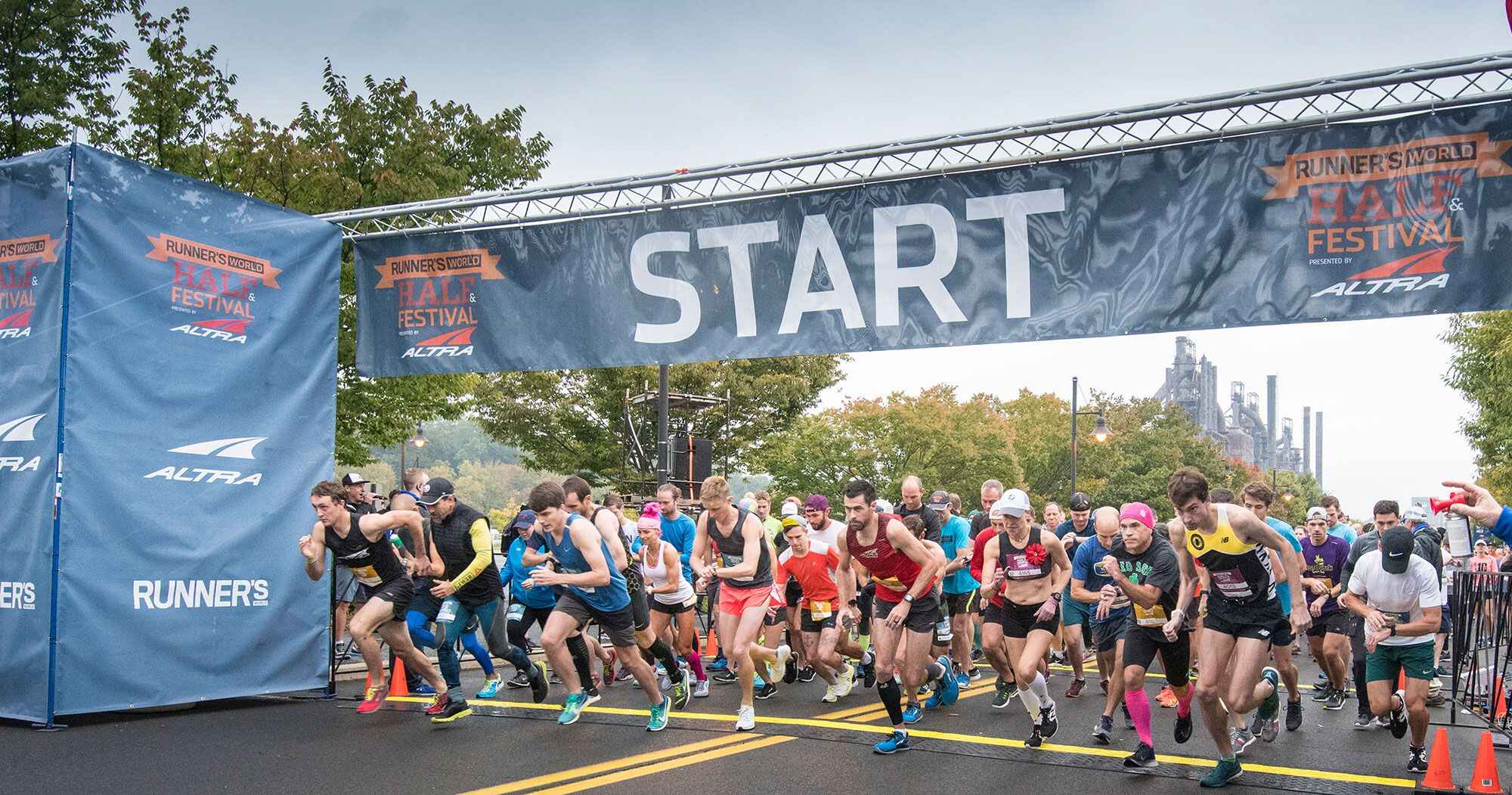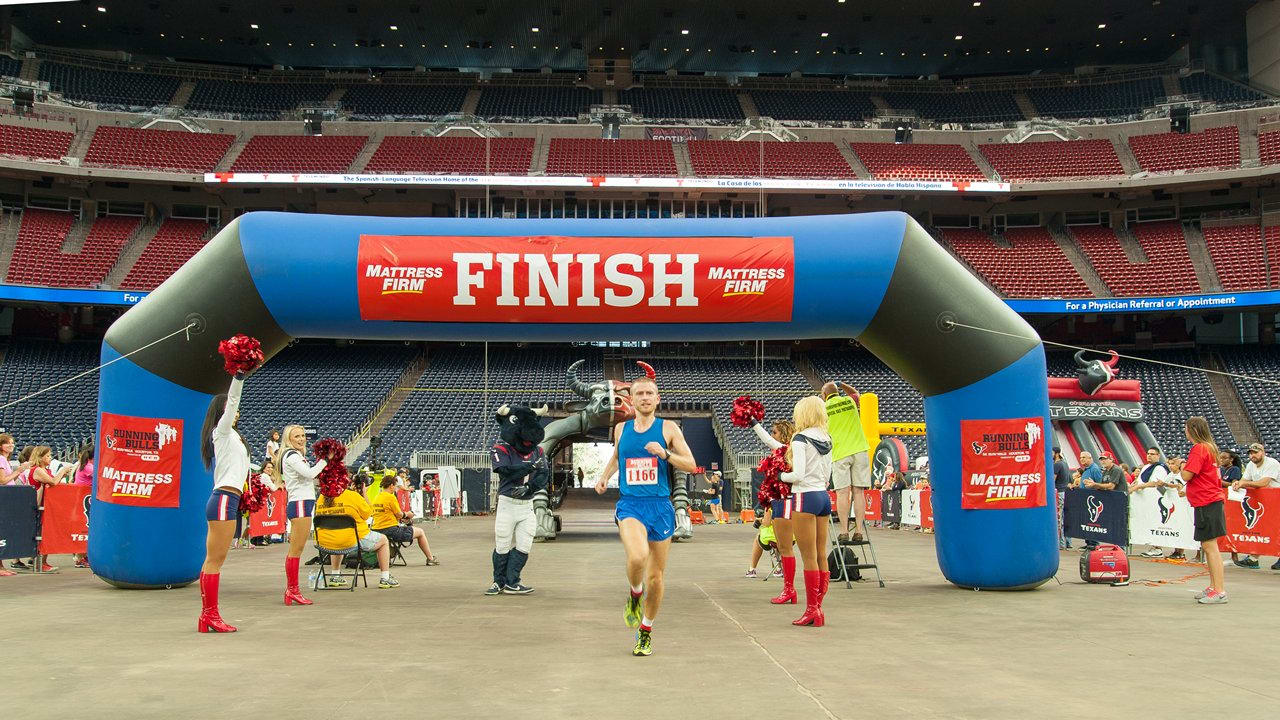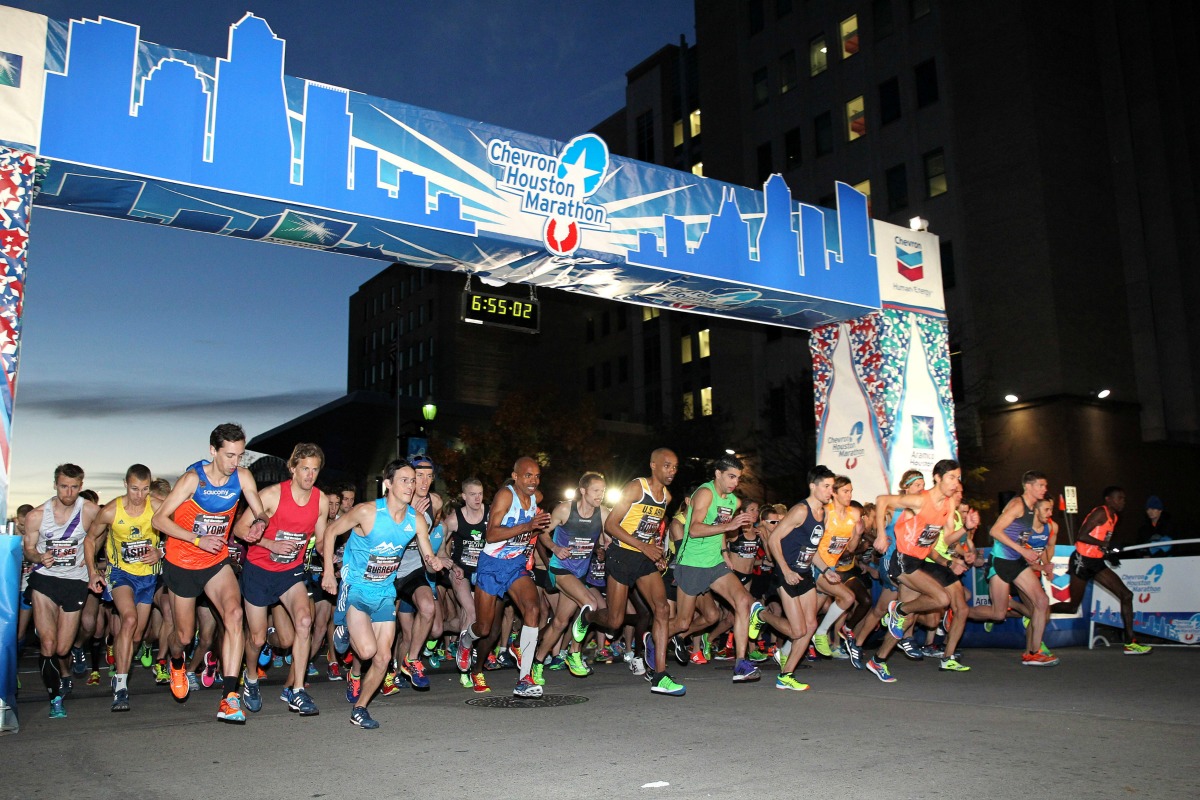Home>Misc>Featured>How To Create A 5K Triathlon Route Map In Arcmap


Featured
How To Create A 5K Triathlon Route Map In Arcmap
Modified: August 19, 2023
Learn how to create a featured 5K triathlon route map using Arcmap, a powerful mapping software. Step-by-step guide for organizing your race efficiently.
Introduction
Creating a 5K triathlon route map is an essential step in organizing a successful race. Whether you’re an event organizer, a participant, or a coach, having a comprehensive and accurate route map is crucial for planning, training, and ensuring a safe and enjoyable event. In this article, we will guide you through the process of creating a 5K triathlon route map using ArcMap, a powerful Geographic Information System (GIS) software.
ArcMap offers a wide range of functionalities, including importing base maps, plotting routes, and adding points of interest. By leveraging these features, you can visualize the exact route, identify elevation changes, and highlight important landmarks along the way. Whether it’s a swim, bike, or run route, ArcMap provides the tools you need to create a detailed and informative map.
Mapping a 5K triathlon route involves several steps, from gathering data to fine-tuning the details. In this article, we’ll walk you through each stage of the process, providing clear instructions and expert tips to ensure your route map is accurate and visually appealing. Whether you’re a beginner or have experience with GIS software, this article will serve as your comprehensive guide to successfully creating a 5K triathlon route map.
By the end of this article, you’ll have a solid understanding of how to use ArcMap to create a detailed and professional-looking 5K triathlon route map. Whether you’re organizing an event, preparing for a competition, or simply exploring new routes for training, this knowledge will empower you to visualize and plan your triathlon experience more effectively.
Step 1: Gathering Data
Before you start creating your 5K triathlon route map, it’s essential to gather all the necessary data. This includes information about the race venue, existing maps, elevation data, and any specific points of interest along the route. Here are the key steps to gather the data:
- Determine the race venue: Identify the location where the triathlon will take place. This could be a park, beach, or any designated area suitable for the event. Knowing the venue will help you align the map with the actual course.
- Collect existing maps: Look for existing maps of the race venue or surrounding areas. These maps can be topographical maps, aerial imagery, or even street maps. Gathering this information will provide a reference for accurately plotting the route.
- Obtain elevation data: Elevation data is crucial for creating an accurate representation of the race course. You can acquire elevation data from various sources, such as online repositories, governmental websites, or specialized GIS datasets. Remember to use data specific to the race venue for the most precise results.
- Take note of points of interest: Consider any significant landmarks or points of interest along the route. This could include water stations, aid stations, transition areas, or iconic landmarks. Identifying and marking these points will help participants navigate the course more easily.
- Consider safety measures: Gather information on any potential safety hazards along the route, such as steep inclines, sharp turns, or areas with limited visibility. This will help you plan the course in a way that prioritizes the safety of the participants.
By gathering all the necessary data in this step, you will have a solid foundation for creating the 5K triathlon route map. This data will serve as a reference throughout the mapping process, ensuring the accuracy and reliability of the final map.
Step 2: Setting Up ArcMap
Once you have gathered the necessary data for your 5K triathlon route map, it’s time to set up ArcMap and prepare it for mapping. Here are the key steps to follow:
- Install ArcMap: If you haven’t already, ensure that ArcMap is properly installed on your computer. You can download and install the software from the official Esri website.
- Create a new project: Open ArcMap and create a new project. This will serve as your workspace for creating the route map. Give your project a descriptive name and save it in a location of your choice.
- Set the coordinate system: Define the coordinate system that best fits your project. This ensures that the map’s spatial data aligns accurately with real-world locations. You can choose from a variety of coordinate systems, depending on your specific needs.
- Customize the layout: Customize the layout of your ArcMap workspace according to your preferences. Arrange the windows, toolbars, and menus in a way that allows for efficient and intuitive map creation.
- Set up data sources: Connect your project to the data sources you gathered in Step 1. This involves adding the existing maps, elevation data, and any other relevant datasets to your ArcMap project.
- Create a new map: Within your project, create a new map document. This will serve as the canvas for designing your 5K triathlon route map. Name the map document and ensure it is saved within your project folder.
Properly setting up ArcMap at the beginning will ensure a smooth and efficient mapping process. By following these steps, you will establish the foundation for creating a detailed and visually appealing 5K triathlon route map.
Step 3: Importing Base Maps
Base maps provide the foundation for your 5K triathlon route map, offering a visual reference of the surrounding area and existing features. ArcMap allows you to import base maps to enhance the accuracy and detail of your route. Here’s how to import base maps:
- Select appropriate base maps: Determine the type of base maps that will best suit your routing needs. This could include topographic maps, satellite imagery, or street maps. Consider the level of detail required for your map and choose base maps accordingly.
- Access base map services: Explore online base map services such as ArcGIS Online, Google Maps, or OpenStreetMap. These services provide a vast collection of base maps that you can access and import directly into ArcMap.
- Locate base map data: If you have access to local base map data, such as shapefiles or raster images, you can import them into ArcMap. This ensures that you have precise and up-to-date base maps for your specific race venue.
- Create a base map layer: Within your ArcMap project, create a new layer that will serve as your base map. This layer will act as a foundation upon which you will plot the 5K triathlon route.
- Add base map data to the layer: Import the selected base maps or local base map data into the newly created base map layer. Adjust the transparency and visibility settings as needed to ensure that the base maps do not overpower the other components of your map.
Importing base maps is a crucial step in creating an accurate and visually appealing 5K triathlon route map. By leveraging base maps, you provide participants, organizers, and coaches with a clear understanding of the course and its surroundings, facilitating proper planning and navigation.
Step 4: Creating the Start and Finish Points
The start and finish points are key elements of any 5K triathlon route map. They indicate where participants begin their race and where they complete the course. By accurately and clearly marking these points on your map, you provide crucial information for participants and event organizers. Here’s how to create the start and finish points:
- Identify the start and finish locations: Determine the exact locations where the triathlon race will start and finish. These points are usually chosen for logistical reasons, such as space availability or convenience for spectators.
- Geocode the start and finish points: Geocoding is the process of transforming addresses or place names into geographic coordinates. Use a geocoding tool or online geocoding service to convert the start and finish addresses into latitude and longitude coordinates.
- Add the start and finish points as map features: In your ArcMap project, create a new feature layer to represent the start and finish points. Assign appropriate symbology, such as distinct markers or icons, to clearly differentiate these points from other features on the map.
- Plot the start and finish points: Use the obtained latitude and longitude coordinates to plot the start and finish points on your map. Ensure their placement accurately reflects the intended locations of the actual race.
- Label the start and finish points: Add labels to the start and finish points to provide additional context. You can include the corresponding address, race number, or any other relevant information that may be valuable to participants and organizers.
Creating clear and well-defined start and finish points on your 5K triathlon route map is crucial for effective race communication and navigation. By following these steps, you will provide participants with a visual representation of where their triathlon journey begins and ends.
Step 5: Plotting the Swim Route
The swim route is an integral part of the 5K triathlon, and accurately plotting it on your route map is essential. This step allows participants to visualize the swim course and understand its distance, direction, and any potential obstacles. Here’s how to plot the swim route:
- Understand the swim course: Familiarize yourself with the details of the swim course, including its distance, shape, and any specific guidelines or restrictions. This information will guide you in accurately representing the swim route on your map.
- Identify key points on the swim route: Determine the critical points along the swim course, such as buoys or markers that indicate direction changes or turns. These points will help you accurately plot the swim route on the map.
- Create a new feature layer: In your ArcMap project, create a new feature layer specifically for the swim route. This layer will house the swim route data and allow you to modify and style it separately from other components of the map.
- Digitize the swim route: Using the edit tools in ArcMap, digitize the swim route by tracing the path of the course on the map. Start from the designated starting point and continue until you reach the finish line, marking each key point along the way.
- Add additional features: Enhance the swim route representation by adding features such as the swim start and finish markers, buoy locations, or any other relevant elements that add context and clarity to the map.
- Label the swim route: Include labels or annotations on the swim route to indicate its distance, specific sections, or any crucial information. This will provide valuable details for participants, such as reference points, turns, or notable landmarks.
By accurately plotting the swim route on your 5K triathlon route map, you provide participants with a clear understanding of their swim course. This step sets the foundation for visualizing the entire triathlon route and ensures smooth navigation during the race.
Step 6: Designing the Bike Route
The bike route is a critical component of the 5K triathlon, and designing it accurately and efficiently is crucial for a successful race. This step involves plotting the bike course on your route map, considering factors such as distance, elevation, and road conditions. Here’s how to design the bike route:
- Analyze the race venue: Study the race venue and its surrounding area to understand the available bike routes. Identify roads that are suitable for the triathlon, considering factors like traffic conditions, road surface quality, and elevation changes.
- Determine the bike course distance: Decide on the desired distance for the bike course, keeping in mind the overall length of the triathlon and the participants’ abilities.
- Plot the bike route on the map: Using ArcMap, plot the bike route on your map by tracing the selected roads or trails. Start from the designated starting point, taking into account any designated loops or segments that make up the bike course.
- Consider elevation changes: Analyze the elevation profile along the bike route to account for any significant climbs or descents. This information will help participants prepare and adjust their strategy accordingly.
- Allocate transition areas: Identify suitable locations for transition areas, where participants will shift between swimming and biking, and later between biking and running. Mark these areas on your map to provide a comprehensive overview of the race logistics.
- Highlight important landmarks: Add key landmarks along the bike route, such as water stations, aid stations, or notable points of interest. These landmarks will serve as reference points for participants and event staff.
- Label and style the bike route: Enhance the visual representation of the bike route by adding labels indicating the distance, sections, or any other relevant information. Apply appropriate symbology to differentiate the bike route from other layers on the map.
Designing the bike route on your 5K triathlon route map is crucial for creating an engaging and challenging race experience. By following these steps, you ensure that participants have a clear understanding of the bike course and can navigate the route with confidence.
Step 7: Mapping the Running Route
The running route is an essential part of the 5K triathlon, and accurately mapping it on your route map is crucial for participants to understand the course. This step involves plotting the running route, considering factors such as distance, terrain, and any points of interest along the way. Here’s how to map the running route:
- Analyze the race venue: Study the race venue and its surroundings to identify suitable paths or trails for the running route. Consider factors such as terrain, safety, and existing running paths.
- Determine the running route distance: Decide on the desired distance for the running route, keeping in mind the overall length of the triathlon and the participants’ abilities.
- Plot the running route on the map: Use ArcMap to trace the running route on your map, starting from the designated starting point and ending at the finish line. Consider any loops or segments that make up the running course.
- Maintain participant safety: Consider the safety of participants as you map the running route. Avoid busy roads, hazardous areas, or steep inclines that could pose risks to participants.
- Highlight landmarks and points of interest: Mark important landmarks, such as water stations, aid stations, or iconic landmarks, along the running route. These landmarks provide reference points and aid in participant navigation.
- Consider elevation changes: Analyze the elevation profile of the running route to account for any significant inclines or declines. This helps participants prepare and adapt their running strategy during the race.
- Label and style the running route: Add labels indicating the distance, notable sections, or any other relevant information to enhance the visual representation of the running route. Apply appropriate symbology to differentiate the running route from other layers on the map.
Mapping the running route on your 5K triathlon route map is crucial for participants to visualize the course and prepare for the race. By following these steps, you ensure that participants have a clear understanding of the running route and can navigate it effectively.
Step 8: Adding Points of Interest
Adding points of interest to your 5K triathlon route map is an excellent way to enhance the participant experience and provide valuable information. These points can include water stations, aid stations, restrooms, spectator areas, or any other important landmarks along the route. Here’s how to add points of interest to your map:
- Identify key points of interest: Determine the points along the triathlon route that are essential for participants, spectators, or event staff. These can include aid stations, where participants can hydrate, restrooms, where participants can access facilities, or spectator areas, where friends and family can cheer.
- Create a new point feature layer: In your ArcMap project, create a new point feature layer specifically for the points of interest. This layer allows you to manage and style these points separately from other components of the map.
- Digitize the points of interest: Using the editing tools in ArcMap, place the points of interest on the map according to their actual locations. Ensure that the points are accurately positioned along the triathlon route.
- Add attributes to the points: Include relevant attributes for each point of interest, such as the name, description, services available, or contact information. These details provide essential information for participants and event staff.
- Style the points of interest: Apply appropriate symbology and labeling to distinguish the points of interest from other map features. This will ensure that they are easily recognizable and stand out on the map.
- Consider accessibility: If there are specific points of interest that are accessible to participants with disabilities, mark them appropriately on the map and provide any relevant information to ensure inclusivity.
Adding points of interest to your 5K triathlon route map enhances the overall experience for participants, spectators, and event staff. By following these steps, you provide valuable information and contribute to a well-organized and enjoyable race.
Step 9: Fine-tuning the Route
Fine-tuning the route of your 5K triathlon map is an essential step to ensure accuracy, adjust any inconsistencies, and optimize the overall experience for participants. This step involves reviewing and refining the map to address any potential issues or improvements. Here’s how to fine-tune the route:
- Review the entire route: Carefully examine the entire route of the triathlon, including the swim, bike, and run segments. Look for any discrepancies, overlaps, or areas that need improvement.
- Check for accuracy: Verify that all the distances, landmarks, and points of interest on the map are accurate and match the actual race course. Make any necessary adjustments or corrections.
- Consider participant safety: Assess the route for any potential hazards or safety concerns, such as narrow roads, challenging terrain, or areas with limited visibility. Make modifications to ensure participant safety during the race.
- Seek feedback: Share the route map with experienced athletes or event organizers to gather feedback and insights. Consider their feedback and make any necessary adjustments to improve the overall quality of the route.
- Test the route: If possible, physically test the route by following it yourself or organizing a trial run with volunteers. This hands-on approach allows you to identify any areas that may need further adjustments or improvements.
- Update the map: Incorporate any modifications or refinements into your route map. Update the visuals, labels, and any other relevant information to reflect the final, fine-tuned course.
Fine-tuning the route of your 5K triathlon map ensures that it accurately represents the actual race course and provides a safe and enjoyable experience for participants. By following these steps, you can address any potential issues and optimize the map to create a memorable triathlon event.
Step 10: Exporting and Sharing the Route Map
Once you have created and fine-tuned your 5K triathlon route map, it is time to export and share it with participants, event staff, and other stakeholders. Exporting and sharing the route map ensures that everyone involved has access to the necessary information for a successful triathlon. Here’s how to export and share the route map:
- Select an appropriate file format: Determine the file format that works best for your intended use. Common file formats for route maps include PDF, JPEG, or SVG. Choose a format that retains the necessary detail and is accessible to all stakeholders.
- Export the map: Using ArcMap or a similar software, export the route map as the chosen file format. Ensure that the exported map is of sufficient quality, with clear labels, symbology, and map elements.
- Consider different versions: Depending on your needs, you might want to create different versions of the route map. This could include a full-size version for display, a smaller and simplified version for handouts, or an interactive digital map for online sharing.
- Share the map: Distribute the route map to all relevant parties, including participants, event staff, sponsors, and volunteers. Utilize various communication channels such as email, social media, event websites, or physical copies to ensure widespread access to the map.
- Provide clear instructions and information: Accompany the route map with clear instructions, highlighting important details such as start and finish times, parking locations, and any event-specific rules or regulations. This ensures that everyone understands the information presented on the map.
- Encourage feedback: Encourage recipients to provide feedback or ask questions about the route map. This feedback can help identify any areas for improvement or clarification, ensuring that everyone has a comprehensive understanding of the triathlon route.
Exporting and sharing the route map is a crucial final step in the process of creating a 5K triathlon route map. By following these steps, you ensure that participants and stakeholders have easy access to the map and the information needed to participate in and organize a successful triathlon event.
Conclusion
Creating a 5K triathlon route map using ArcMap provides a valuable tool for event organizers, participants, and coaches. By following the ten-step process outlined in this article, you can effectively gather data, set up ArcMap, import base maps, plot the swim, bike, and running routes, add points of interest, fine-tune the route, and finally, export and share the map with stakeholders. Through each step, attention to detail, accuracy, and participant safety are critical.
Designing the map allows participants to visualize the course, understand distances, elevation changes, and identify key landmarks along the way. Accuracy and attention to detail ensure a safe and enjoyable experience for participants, while providing essential information to event staff and spectators. The fine-tuning step allows for adjustments and improvements based on feedback and physical testing of the route, ensuring a seamless and engaging event.
By exporting and sharing the route map, all relevant parties have access to the crucial information they need to navigate the triathlon course. Clear instructions, multiple versions of the map, and thoughtful distribution ensure that participants and stakeholders can easily access the map and understand its contents.
Through the process of creating a 5K triathlon route map, ArcMap proves to be an invaluable tool for its capabilities in importing base maps, plotting routes, adding points of interest, and customizing the design. The detailed and accurate map provides a visual representation of the triathlon route, enhancing communication, preparation, and safety for all involved.
In conclusion, by following the outlined steps, you can create a comprehensive, visually appealing, and accurate 5K triathlon route map using ArcMap. Whether you are an event organizer, participant, or coach, having a well-designed map will help you plan, navigate, and enjoy the triathlon experience to its fullest.







